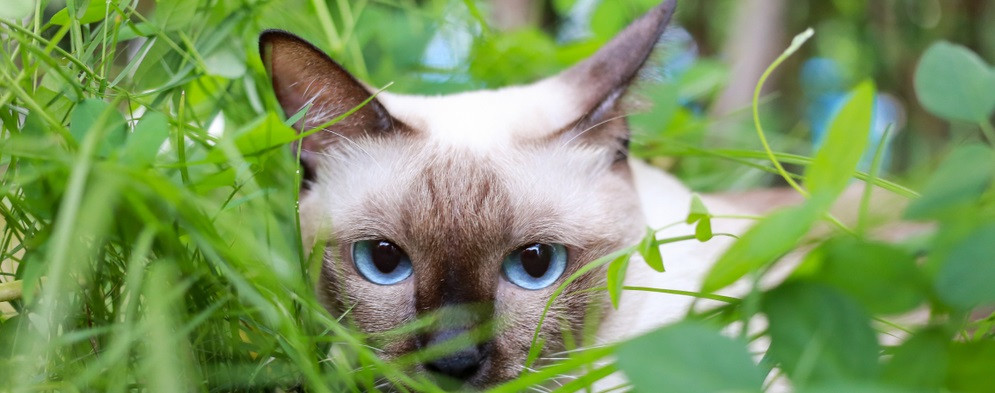Cleaning a cat’s eyes involves using a gentle, veterinarian-approved method to remove discharge and prevent infections, ensuring your feline friend’s comfort and health. At solcat.net, we understand the importance of proper feline hygiene. Discover expert tips for maintaining your cat’s eye health, including identifying potential issues and providing the best care to keep their eyes bright and healthy. Learn about feline eye care, cat eye discharge, and preventative measures.
1. Why Is Cleaning Your Cat’s Eyes Important?
Cleaning your cat’s eyes is important because it prevents infections, removes discharge, and ensures their overall eye health, contributing to their comfort and well-being. Neglecting this can lead to discomfort, irritation, and potential health issues. The American Animal Hospital Association (AAHA) emphasizes the importance of routine hygiene for pets, including eye care, to maintain their quality of life.
1.1 Preventing Infections and Irritation
Cleaning your cat’s eyes helps prevent bacterial buildup, which can lead to infections. Regular cleaning removes debris and discharge that can irritate the eyes. According to the Cornell Feline Health Center, consistent hygiene practices significantly reduce the risk of feline eye infections.
1.2 Enhancing Overall Eye Health
Regular eye cleaning can help detect early signs of eye problems, such as excessive tearing or redness. Addressing these issues early can prevent them from becoming more serious. Veterinarians at solcat.net recommend incorporating eye cleaning into your regular grooming routine.
 Cat with beautiful blue eyes
Cat with beautiful blue eyes
2. What Are The Signs That Your Cat’s Eyes Need Cleaning?
Signs that your cat’s eyes need cleaning include discharge, excessive blinking, pawing at the eyes, squinting, and crustiness around the eyes. Recognizing these symptoms early can prevent minor issues from becoming serious. Keeping a close watch on your cat’s eyes is crucial for their health.
2.1 Identifying Common Symptoms
If you notice discharge, which can be clear, yellow, or green, it’s a clear sign that your cat’s eyes need attention. Excessive blinking or squinting indicates discomfort, while crustiness around the eyes suggests dried discharge that needs to be cleaned.
2.2 Recognizing Potential Underlying Issues
These symptoms can also indicate underlying health problems such as conjunctivitis, respiratory infections, or corneal disorders. It’s essential to monitor your cat’s eyes regularly and consult a vet if symptoms persist. According to research from the Cornell Feline Health Center, these symptoms can be early indicators of more severe conditions, so early detection is key.
3. What Supplies Do You Need To Clean Your Cat’s Eyes Safely?
To clean your cat’s eyes safely, you need sterilized water, cotton balls or a clean cotton washcloth, and a veterinarian-approved eye rinse. Having these supplies on hand ensures a gentle and effective cleaning process. A soothing agent can also be helpful to calm your cat during cleaning.
3.1 Essential Cleaning Materials
Sterilized water is crucial to avoid introducing bacteria into your cat’s eyes. Cotton balls or a soft washcloth are ideal for gentle cleaning. A pet-safe eye rinse can help dissolve discharge and soothe irritation.
3.2 Choosing the Right Products
Always opt for products specifically designed for cats to avoid harsh chemicals that could harm their eyes. Vetericyn’s Antimicrobial Eye Wash is a good example of a gentle, effective product. Be sure to consult your veterinarian before using any new products.
4. How Do You Prepare For Cleaning Your Cat’s Eyes?
To prepare for cleaning your cat’s eyes, gather all necessary supplies, choose a calm environment, and enlist help if needed to make the process as smooth as possible. Preparing properly ensures a stress-free experience for both you and your cat. A calm environment also helps to keep your cat relaxed and cooperative.
4.1 Creating a Calm Environment
Select a quiet, comfortable space where your cat feels secure. Avoid loud noises or sudden movements that could startle them. A familiar setting can help reduce anxiety.
4.2 Enlisting Assistance
Having someone hold your cat gently can make the cleaning process easier and safer. This prevents sudden movements that could cause injury. Teamwork can make the task more manageable and less stressful.
5. What Are The Step-By-Step Instructions For Cleaning Your Cat’s Eyes?
Step-by-step instructions for cleaning your cat’s eyes involve gently wiping from the inner corner to the outer corner with a clean, damp cotton ball, using a fresh cotton ball for each eye. This method helps remove discharge without spreading bacteria. Always be gentle to avoid causing discomfort to your cat.
5.1 Gentle Wiping Technique
Dampen a cotton ball with sterilized water or a vet-approved eye rinse. Gently wipe from the inner corner of the eye outward, removing any discharge or debris. Avoid pressing too hard.
5.2 Using Separate Cotton Balls
Use a fresh cotton ball for each eye to prevent cross-contamination. This reduces the risk of spreading infection from one eye to the other. Hygiene is key to maintaining your cat’s eye health.
 Veterinarian cleaning cat's eyes
Veterinarian cleaning cat's eyes
6. How Often Should You Clean Your Cat’s Eyes?
You should clean your cat’s eyes as needed, typically 1-2 times a week, or more frequently if you notice excessive discharge or crustiness. Regular cleaning prevents buildup and helps maintain eye health. Pay attention to your cat’s individual needs.
6.1 Regular Maintenance Schedule
For most cats, cleaning their eyes once or twice a week is sufficient. This routine helps prevent the accumulation of debris and keeps their eyes clear. Consistency is important for maintaining good hygiene.
6.2 Adjusting Based on Needs
If your cat is prone to eye discharge or has allergies, you may need to clean their eyes more frequently. Consult your vet for personalized recommendations. Seasonal allergies can also increase the need for cleaning.
7. What Should You Do If You Notice Excessive Discharge Or Redness?
If you notice excessive discharge or redness in your cat’s eyes, consult a veterinarian immediately to rule out infections or other underlying health issues. Prompt veterinary care can prevent minor problems from becoming serious. Ignoring these symptoms could lead to long-term damage.
7.1 Recognizing Warning Signs
Excessive discharge, redness, swelling, or cloudiness in the eyes are all warning signs that require professional attention. These symptoms could indicate infections, allergies, or injuries. Early detection is crucial for effective treatment.
7.2 Seeking Veterinary Advice
A veterinarian can diagnose the underlying cause of the symptoms and recommend appropriate treatment. This may include antibiotic eye drops, allergy medication, or other interventions. Follow your vet’s instructions carefully.
8. What Are Common Cat Eye Problems And How Can Cleaning Help?
Common cat eye problems include conjunctivitis, corneal ulcers, and allergies. Cleaning helps by removing irritants and preventing bacterial buildup, thus alleviating symptoms and promoting healing. Regular cleaning complements veterinary treatments.
8.1 Addressing Conjunctivitis
Conjunctivitis, or pink eye, is a common feline ailment. Cleaning helps remove discharge and prevent the spread of infection. Antibiotic eye drops are often prescribed in conjunction with regular cleaning.
8.2 Managing Corneal Ulcers
Corneal ulcers are painful sores on the surface of the eye. Cleaning helps keep the area free from debris, promoting healing. Veterinary treatment is essential to prevent complications. According to a study by the American Animal Hospital Association (AAHA), proper hygiene is vital in managing corneal ulcers.
9. How Can You Make Eye Cleaning A Positive Experience For Your Cat?
To make eye cleaning a positive experience for your cat, use positive reinforcement, be gentle, and associate the process with treats and praise to reduce anxiety. A calm and patient approach can help your cat become more cooperative. Creating positive associations can make eye cleaning less stressful.
9.1 Using Positive Reinforcement
Reward your cat with treats and praise after cleaning their eyes. This creates a positive association and encourages them to cooperate in the future. Positive reinforcement is a powerful tool in feline care.
9.2 Being Gentle and Patient
Handle your cat gently and speak in a soothing voice. Avoid sudden movements or harsh handling, which can cause fear and resistance. Patience is key to a successful cleaning session.
10. What Are Some Additional Tips For Maintaining Your Cat’s Eye Health?
Additional tips for maintaining your cat’s eye health include regular vet check-ups, providing a balanced diet, and monitoring their environment for potential irritants. Proactive care can help prevent many eye problems. A healthy cat is more likely to have healthy eyes.
10.1 Regular Veterinary Check-Ups
Annual vet check-ups are essential for detecting and addressing potential health issues early. Your vet can perform a thorough eye exam and recommend preventive measures. Regular check-ups contribute to overall well-being.
10.2 Providing a Balanced Diet
A nutritious diet supports overall health, including eye health. Ensure your cat receives a balanced diet rich in vitamins and minerals. Proper nutrition is fundamental for maintaining healthy eyes.
10.3 Monitoring the Environment
Keep your cat’s environment clean and free from potential irritants, such as dust, pollen, and smoke. These irritants can exacerbate eye problems. Maintaining a clean environment promotes better eye health.
Cleaning your cat’s eyes is a crucial part of their grooming routine. At solcat.net, we provide valuable resources and expert advice to help you care for your feline companion. By understanding the signs, using the right supplies, and following our step-by-step guide, you can ensure your cat’s eyes remain healthy and comfortable. For more detailed information and to connect with a community of cat lovers, visit solcat.net today. Address: 950 Alaskan Way, Seattle, WA 98104, United States. Phone: +1 (206) 386-4000.
FAQ: How Do You Clean A Cat’s Eyes?
1. How often should I clean my cat’s eyes?
You should clean your cat’s eyes as needed, typically 1-2 times a week, or more frequently if you notice excessive discharge or crustiness.
2. What supplies do I need to clean my cat’s eyes?
You need sterilized water, cotton balls or a clean cotton washcloth, and a veterinarian-approved eye rinse.
3. How do I know if my cat’s eye problem is serious?
If you notice excessive discharge, redness, swelling, or cloudiness, consult a vet immediately.
4. Can I use human eye drops on my cat?
No, always use products specifically designed for cats to avoid harsh chemicals.
5. How can I make eye cleaning less stressful for my cat?
Use positive reinforcement, be gentle, and associate the process with treats and praise.
6. What are common cat eye problems?
Common cat eye problems include conjunctivitis, corneal ulcers, and allergies.
7. How does cleaning help with conjunctivitis?
Cleaning helps remove discharge and prevent the spread of infection in cases of conjunctivitis.
8. What should I do if my cat resists eye cleaning?
Enlist help to hold your cat gently, and try cleaning when they are relaxed.
9. Is it normal for cats to have eye discharge?
Some discharge is normal, but excessive discharge indicates a problem.
10. Where can I find more information about cat eye care?
Visit solcat.net for valuable resources and expert advice on feline eye care.
